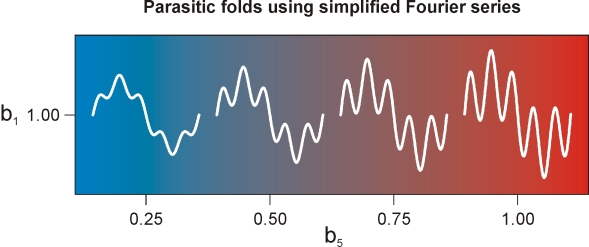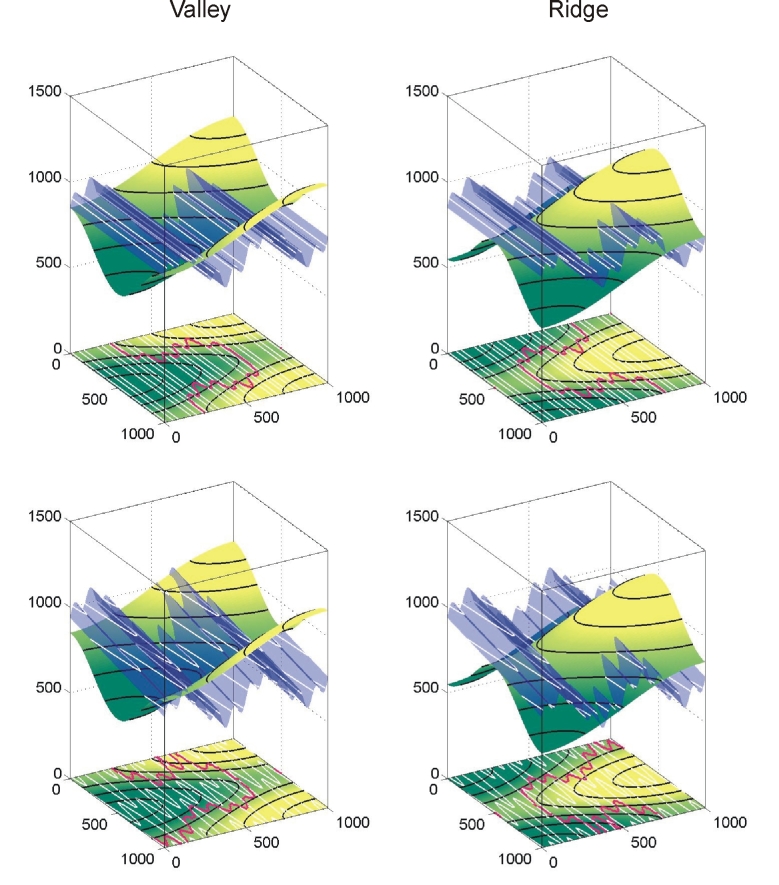
where b1 and b5 are Fourier coefficients that determine the fold shape and w is the wavelength. The first coefficient modifies the amplitude of the first order fold, whereas the fifth the amplitude of the second order folds. A chart of parasitic fold shapes that were plotted using the above equation is shown below.

To plot parasitic folds and their structure contours open the file structure_contours_folds.m in Matlab. In the Matlab editor select the menu ‘debug’ and ‘run’. In the Matlab command window the following text appears:
Please choose topography
valley (enter 1) or ridge (enter 2) or both (enter 3)?
Type 1, 2 or 3 and press the return key. Then the following text appears:
Please choose geological structure
Box- and Chevron folds (enter 1) or parasitic folds (enter 2)?
Type 2 and press the return key. Then the following text appears:
plunge of fold:
Type the plunge of the fold (in degrees) and press the return key. Then you are asked the following:
Please enter harmonic coefficients, b1 and b5
b1:
b5:
Type in the coefficients (some guidelines are given in the diagram above) and press return. The Matlab diagrams shown below give some examples with non-plunging (top) and 10 degree plunging parasitic folds that were created with this script. The Fourier coefficients b1 and b5 are 1.0 and 0.5, respectively.
